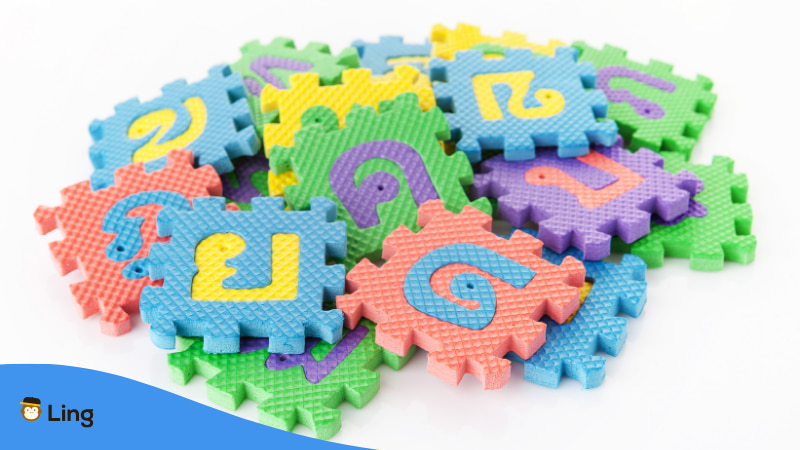Do you feel like your Thai pronunciation practice is going nowhere? As a result, you likely overlook a crucial aspect of Thai phonetics, leading to your continued failure to master the language.
You may have heard that if you master the fundamentals, you can eventually become an expert in any language. The study of phonetics is an essential first step in learning any language and should not be rushed.
Speaking simply by repeating what you heard the locals say might work in some situations. However, you’ll need in-depth familiarity with each field, such as Thai vowels and consonant sounds, if you hope to perfect your Thai pronunciation.
This article will help you get back on your feet after a period of confusion, so read on, and let’s get back to the basics together!
Overview Of Thai Phonetics
The Thai language is based entirely on phonetics. Pronunciation and tone accuracy are the biggest challenges. Since Thai words include many homophones and homographs, the meaning of a word can be significantly changed if it’s heard incorrectly or mispronounced.
So it’s time to dive into the 3 essential skills to help you speak Thai like a native.

#1 Skill: Learn 44 Thai Alphabets And 21 Consonant Sounds
In Thai, we use 44 consonants. However, only 21 consonant sounds can be made by these consonants because some sound the same. Also, some of the Thai phonetics are quite close to the English phonetic alphabet. Let’s take a look!
Thai Alphabet
| Thai Phonetics | |||
|---|---|---|---|
| ก gɔɔ gài | ข kɔ̌ɔ kài | ฃ kɔ̌ɔ kùat | ค kɔɔ kwaai |
| ฅ kɔɔ kon | ฆ kɔɔ rá kang | ง ngɔɔ nguu | จ jɔɔ jaan |
| ฉ chɔ̌ɔ chìng | ช chɔɔ cháang | ซ sɔɔ sôo | ฌ chɔɔ gà chəə |
| ญ yɔɔ yǐng | ฎ dɔɔ chá daa | ฏ dtɔɔ bpà dtàk | ฐ tɔ̌ɔ tǎan |
| ฑ tɔɔ naang mon too | ฒ tɔɔ pûu tâo | ณ nɔɔ neen | ด dɔɔ dèk |
| ต dtɔɔ dtào | ถ tɔ̌ɔ tǔng | ท tɔɔ tá hǎan | ธ tɔɔ tong |
| น nɔɔ nǔu | บ bɔɔ bai | ป bpɔɔ bplaa | ผ pɔ̌ɔ pʉ̂ng |
| ฝ fɔ̌ɔ fǎa | พ pɔɔ paan | ฟ fɔɔ fan | ภ pɔɔ sǎm pao |
| ม mɔɔ máa | ย yɔɔ yák | ร rɔɔ rʉa | ล lɔɔ ling |
| ว wɔɔ wɛ̌ɛn | ศ sɔ̌ɔ sǎa laa | ษ sɔ̌ɔ rʉʉ sǐi | ส sɔ̌ɔ sʉ̌a |
| ห hɔ̌ɔ hìip | ฬ lɔɔ jù laa | อ ɔɔ àang | ฮ hɔɔ nók hûuk |
Comparing Thai Consonants With The Roman Alphabet
As mentioned earlier, some of the Thai consonant sounds are similar to those heard in English. Here are the examples to show what we mean. Knowing these sounds will also make learning the sounds in Thai so much easier to remember.
| Thai Alphabet | Roman Alphabet | Example of English Words | Example of Thai Words |
|---|---|---|---|
| ก | g | Game, go, gun | ไก่ (gài) – chicken |
| ค, ฅ, and ฆ | kh | King, come, cake | ควาย (kwaai) – buffalo |
| ง | ng | – | งู (nguu) – snake |
| จ | j | January, job, join | จาน (jaan) – dish |
| ช and ฌ | ch | Chain, chat, chill | ช้าง (cháang) – elephant |
| ซ | s | Sing, song, sit | โซ่ (sôo) – chain |
| ญ and ย | y | Yard, Yellow, You | ยาย (yaai) – grandmother |
| ฎ and ด | d | Dance, do, duck | เด็ก (dèk) – child |
| ฏ and ต | dt | – | เต้น (dtên) – dance |
| ฑ, ฒ, ท, and ธ | t | Two, top, tank | ทาง (taang) – way |
| ณ and น | n | Note, noon, nut | นั่ง (nâng) – sit |
| บ | b | Bird, book, bread | บอก (bɔ̀ɔk) – tell |
| ป | bp | – | ปาก (bpàak) – mouth |
| พ and ภ | p | Pan, pot, pin | พูด (pûut) – speak |
| ฟ | f | Fast, fun, feel | ฟัง (fang) – listen |
| ม | m | Move, man, make | ไม่ (mâi) – not |
| ร | r | Rat, run, right | เรือ (rʉa) – boat |
| ล and ฬ | l | Long, Live, Love | ลิง (ling) – monkey |
| ว | w | Wing, wow, wolf | วาง (waang) – put |
| อ | a | At, in, on | อาหาร (aa hǎan) – food |
| ฮ | h | Horse, hat, hot | นกฮูก (nók hûuk) – owl |
In Thai, there are 21 main consonant sounds. However, the same consonants can have more than one tone. So now we’ll explore the Thai alphabet in its lower-tone form.
| Thai Alphabet | Roman Alphabet | Example of English Words | Example of Thai Words |
|---|---|---|---|
| ข and ฃ | kh (low tone) | – | ไข่ (kài) – egg |
| ฉ | ch (low tone) | – | ฉัน (chǎn) – “I” as a personal pronoun |
| ฐ and ถ | t (lower tone) | – | ถึง (tʉ̌ng) – arrive |
| ผ | p (low tone) | – | ผิด (pìt) – incorrect |
| ฝ | f (low tone) | – | ฝน (fǒn) – rain |
| ศ, ษ, and ส | s (low tone) | – | สอง (sɔ̌ɔng) – two |
| ห | h (low tone) | – | ห้อง (hɔ̂ɔng) – room |

#2 Skill: Learn The 27 Thai Vowel Sounds
Thai has 27 vowel sounds, which is much more than other languages. Despite this, most vowels are consistent with the English alphabet, making it easier to learn the basic sounds and progress to the more complex ones when your schedule allows. So, if you put in the effort and practice a little bit each day, you can get better and better at it. Thai phonetics are easy to learn if you do it as much as you can.
OK, let’s take a look at those vowel letters as a whole.
Vowel Letters
Short Vowels
| Thai Alphabet | Roman Alphabet | Example of English Words | Example of Thai Words |
|---|---|---|---|
| -ะ | -a | – | จะ (ja) – will |
| -ิ | -i | Pin, gin | กิน (gin) – eat |
| -ุ | -u | – | จุ (jù) – contain |
| เ-ะ | -e | – | เตะ (dtè) – kick |
| แ-ะ | -ae | – | แกะ (gaɛ̀) – sheep |
| เ-ียะ | -ia | – | เปรี๊ยะ (bpría) – cracking sound |
| -ัวะ | -ua | – | ผัวะ (pùa) sound of whipping |
| โ-ะ | -oe | – | โต๊ะ (dtóe) – table |
| เ-าะ | -aw | – | เงาะ (ngaw) – rambutan |
| เ-อะ | -ooe | – | เยอะ (yooe) – many |
| -ึ | -ue | – | อึ (ue) – stool |
Thai Long Vowels
| Thai Alphabet | Roman Alphabet | Example of English Words | Example of Thai Words |
|---|---|---|---|
| -า | -aa | Car, far, jar | มา (maa) – come |
| -ี | -ii | Free, see, bee | มี (mii) – have |
| -ื | -uue | – | มือ (muue) – hand |
| เ-ือ | -uua | – | เกลือ (glʉua) – salt |
| -ู | -uu | Do, clue, zoo | งู (nguu) – snake |
| เ- | -ee | Grey, say, play | ดี (dee) – good |
| แ- | -aae | Fair, care, bear | แม่ (maae) – mother |
| เ-ีย | -iia | Fear, here, cheer | เลีย (liia) – lick |
| -ัว | -uua | – | กลัว (gluua) – scare |
| โ- | -ooe | Four, show, low | โง่ (ngôo) – Stupid |
| -อ | -aaw | Law, call, shore | รอ (raaw) – wait |
| เ-อ | -ooe | Her, blur, sure | เธอ (tooe) “she” as a personal pronoun |
| -ำ | -am | Come, mom | ทำ (tam) – do or make |
| ไ- | -ai | Line, hi, die | ไป (bpai) – go |
| ใ- | -ai | (same as above) | ใน (nai) – in |
| เ-า | -ao | Now, sound | เรา (rao) – “we” as a personal pronoun |

#3 Skill: Learn Thai Tone Marks
Thai is one of the tonal languages. There’re five tones in Thai, represented by four distinct markers since the natural tone has no marker. And mispronunciation of tones might result in a complete shift of meaning, for example;
- ปา (bpaa) – throw
- ป้า (bpâa) – aunt
Thai Tone Markers
| Tone Marker Names | Pronunciation | Explanation |
|---|---|---|
| สามัญ | sǎa man | Mid-tone mark |
| ่ เอก | èek | Low tone mark |
| ้ โท | too | Falling tone mark |
| ๊ ตรี | dtrii | High tone mark |
| ๋ จัตวา | jàt waa | Rising tone mark |
To illustrate, let’s look at the Thai word กา (gaa).
| Thai pronunciation For ก่า | ||||
|---|---|---|---|---|
| (สามัญ) | ่ (เอก) | ้ (โท) | ๊ (ตรี) | ๋ (จัตวา) |
| กา gaa | ก่า gàa | ก้า gâa | ก๊า gáa | ก๋า gǎa |
What Is Next For You Language Learners?
Many Thai learners have trouble understanding native speakers, but we believe your pronunciation will improve when you’ve mastered the fundamentals of Thai writing that we’ve explained above because learning Thai pronunciation will make learning the language much simpler. Assuming you’ve mastered the fundamentals of Thai phonetics, you should now be able to pronounce like a native speaker.
Learn Thai With The Ling App
If you’re finding Thai phonetics particularly difficult and considering abandoning your Thai language studies altogether, take a deep breath and read on; we’ve got the perfect solution for you!
The Ling app is excited to provide the most comprehensive language learning application, which includes more than 60 languages worldwide. In particular, the Thai language is featured since it’s one of the most learned and popular choices for language study. We’ve only just scratched the surface of Thai pronunciation.
Our program is packed with other tools designed to speed up your progress, not just in Thai phonetics but in other grammar lessons too. There are features such as an extensive library of Thai vocabulary you’ll need to communicate with natives. If you want to blend in with the locals, our chatbot can help you practice listening to the language daily.
The most important aspect of our Thai lessons is that they’re not like reading a dry textbook that makes you want to sleep every time you have to read it. Instead, we give fun, interactive mini-games that make learning new Thai words a regular habit
Most Thai learners chose Ling to help them succeed, so why not join them? Download the Ling app from the Google Play Store and Apple App Store now, and prepare to be fluent in Thai soon!





















One Response
it is good for beginner like me its really easy to understand thanks